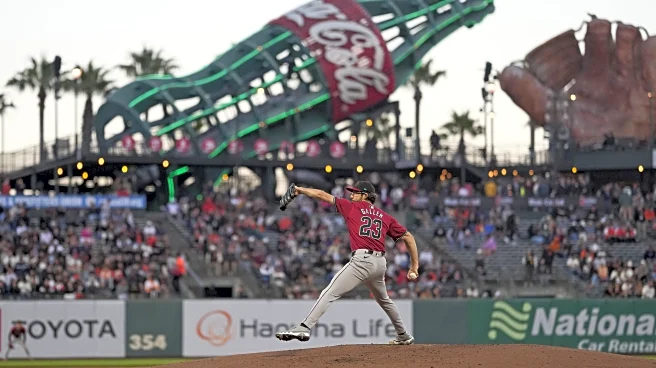What's Happening?
The Major League Baseball free-agent market has opened, and predictions are being made about the contracts top players might secure. Among these players is Framber Valdez, a left-handed pitcher who is currently
a free agent for the Astros. Analysts suggest that Valdez could land a contract similar to the one Max Fried received from the Yankees, which was an eight-year deal worth $218 million. However, the prediction for Valdez is slightly different, with expectations of a seven-year contract valued at $189 million, averaging $27 million annually. This prediction is based on precedent, inflation, and adjustments for age and skill-set profile, as well as the current market conditions.
Why It's Important?
The potential contract for Framber Valdez is significant as it reflects the current dynamics of the MLB free-agent market, where top pitchers are highly valued. If Valdez secures the predicted contract, it would underscore the financial strength and competitive nature of MLB teams in acquiring top talent. This could impact the Astros' roster and their financial strategy moving forward, as well as set a benchmark for other pitchers in the market. The deal could also influence negotiations for other free agents, affecting team compositions and competitive balance in the league.
What's Next?
As the free-agent market progresses, teams will continue to evaluate their needs and financial capabilities to make strategic acquisitions. Framber Valdez's negotiations will be closely watched, as they could set a precedent for other pitchers seeking similar deals. The outcome of these negotiations may prompt reactions from other teams, potentially leading to a ripple effect in contract offers and player movements across the league. Stakeholders, including team management and player agents, will be actively involved in these discussions to maximize their interests.
Beyond the Headlines
The implications of Valdez's potential contract extend beyond immediate financial considerations. It highlights the evolving strategies of MLB teams in building competitive rosters, balancing long-term investments with immediate performance needs. Additionally, it raises questions about the sustainability of high-value contracts in the sport and their impact on team dynamics and player development. The cultural and economic aspects of such deals may influence future negotiations and the overall landscape of professional baseball.












